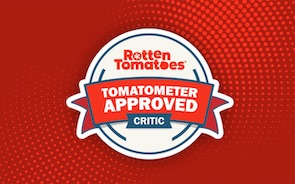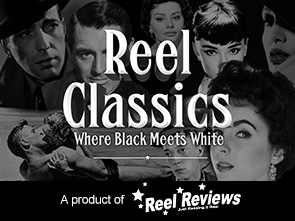{2jtab: Movie Review}
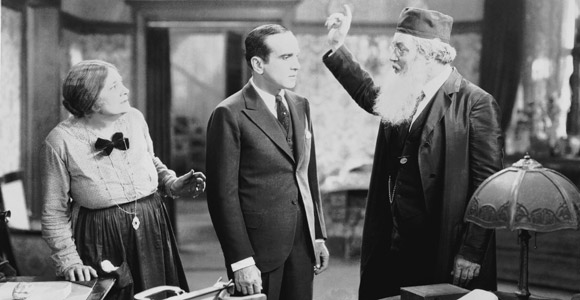
|
![]()
I’m not trying to be funny here, but how many of you heard about The Jazz Singer before you actually saw it? It turns out the revolution was televised (in a roundabout manner of speaking). Moving pictures were meant to have sound and, in 1927, the technology - which had previously made voices sound tinny and high-pitched - was finally ready for a normal-sounding big screen debut. Wait. How many of you movie aficionados out there have yet to see this film? Shame on you. While its nasty reputation – you know, Al Jolson in black face – might overshadow its “I love to Singa” good times, there’s no mistaking its impact on the world of film. It is, after all, the first feature-length film with completely synchronized dialogue and musical sequences. Finally, audiences were ready to take the plunge.
The landmark film was an immediate sensation when it opened and went on to earn the Academy Award for Best Adaptation and garnered a special Academy Award in sound pioneering for Warner Bros. The songs and Jolson’s performance have grown to become legendary. This year the film turns a whopping 90 years old. Rather than allow its birthday to pass by without fanfare, Warner Bros begins its year-long celebration with the high definition debut of The Jazz Singer on Blu-ray with a lovingly remastered three-disc DigiBook set.
The Jazz Singer tells the story of a young man (first portrayed by Robert Gordon) who defies his father (Warner Oland) and his strict Jewish wishes and pursues a career in show business. From the smoky jazz of the New York nightclub scene to the bright lights of the stage and screen, the rise of Jakie Rabinowitz (Jolson) cannot be stopped. With help from Mary Dale (May McAvoy) and understanding from his mother and Yudelson (Otto Lederer), a family friend, Rabinowitz has a shot at being something grand. A sudden and tragic complication on the eve of his big night, however, positions him with a choice to make between family and his career.
The stylized melodrama of The Jazz Singer is, even for 1927’s standards, a tad played-out and basic. None of that matters, though. The sight of Jolson singing and talking was enough to send audiences into orbit. Everything, even today, is easily forgiven for the chance to be transported back to a time when sound and vision wasn’t taken for granted. While one can never look past the important contributions of the artisans from the Silent Era, it’s easy to see, in the handful of scenes where Jolson sings and dances and banters about, what audiences connected with.
Modern viewers might feel a bit of skin crawling during Jolson’s famous (and infamous) minstrel bit and, having just scene it again myself, they probably should. The vocalized race-baited performance is not at all politically correct. Historical, yes, and, while harmless in the context of the film, highlights some of what was (and continues to be) wrong about Hollywood and its audiences.
Jolson, already getting “up there” in age, knows enough about stage presence to maneuver his way through the dialogue until the next song and dance number which, unfortunately, told Hollywood all they needed to know about audiences and their eagerness to forgive “talking” musicals for some truly awful acting moments in film history. It’s the same message we send to them today. Special effects, sound included, are worth whatever its price for our gold.
Regardless of its politics, The Jazz Singer is a part of our popular culture. It’s been praised and parodied, congratulated and admonished for its entire 90 years. Charlie Chaplin and a few others might have been the only ones still making dialogue free pictures (and largely turning their back on the technology) but that wouldn’t stop the era of sound from marching thunderously into the motion picture industry for good. We have The Jazz Singer to thank for the significance we put into our Dolby Digital surround sound.
{2jtab: Film Details}
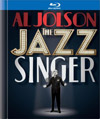 MPAA Rating: This title has not been rated by the MPAA
MPAA Rating: This title has not been rated by the MPAA
Runtime: 89m mins.
Director: Alan Crosland
Writer: Alfred A. Cohn
Cast: Al Jolson; May McAvoy; Warner Oland; Eugene Besserer; Otto Lederer
Genre: Drama | Musical
Tagline: See him - and hear him sing!
Memorable Movie Quote: "Mammy! Don't you know me? It's your little baby!"
Distributor: Warner Bros. Pictures
Official WB Shop: http://bit.ly/YZ0P8Z
Official Facebook Page: www.facebook.com/warnerbrosent
Release Date: October 6, 1927
Own it Blu-ray: January 8, 2013
Synopsis: The Jazz Singer, the first feature-length film with completely synchronized dialogue and musical sequences, will mark another milestone January 8 when Warner home video releases the blu-ray commencing the 2013 year-long 90th anniversary of Warner Bros. Studios. The landmark film, which brought Broadway superstar Al Jolson alive and seemingly singing from the screen, was an immediate sensation when it opened in 1927 and created a revolution in the history of the motion picture industry.
{2jtab: Blu-ray Review}
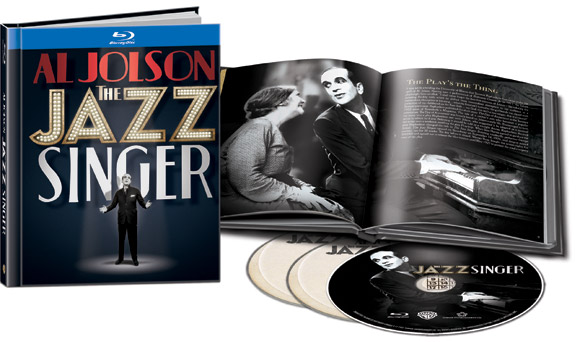
|
||||||||||||||||||
Blu-ray Details:
Available on Blu-ray - January 8, 2013
Screen Formats: 1.33:1
Subtitles: English SDH, French, Spanish, Portuguese, Korean, Polish
Audio: English: DTS-HD Master Audio Mono; Polish: Dolby Digital Mono
Discs: 25GB Blu-ray Disc; Three-disc set (1 BD, 2 DVDs)
Framed at 1.33:1 and presented in 1080p with the AVC codec, the newly restored image features deep, inky blacks and solid contrast levels in spite of the film’s 90 years of age. Not to say there aren’t moments when the image looks a bit washed out, but the clean, blemish-free picture and the material’s overall physical integrity are nothing short of impressive. Film grain appears intact with no signs of excessive digital processing, and overall detail looks great, holding up consistently from establishing shots to close ups. The mono DTS-HD Master Audio track is generally crisp, clear and intelligible, though of course there’s some noticeable hiss and limited sonic detail due to the nature of the original recording. However, like the video, the audio track is in remarkable condition considering the age of the source material, and should surprise first time listeners who may have expected something more “vintage” about its quality.
Supplements:
Commentary:
- Provided by Ron Hutchinson of the "Vitaphone Project" and Vintage Music Expert Vince Giordano, the recorded commentary is interesting and informative with very few pauses. They focus on technical aspects of the film and its visual/sound presentation. They also provide background notes on Jolson and other cast members.
Special Features:
The DigiBook Edition of the Blu-ray three-disc set includes a collectible book that features essays, actor biographies, numerous promotional and production photographs, and reproductions of the film’s marketing materials, including a printed program reprint distributed at the film’s screening. Supplementals on Disc One include a 1926 short starring Jolson (again in blackface) singing “When the Red Red Robin Starts Bob Bob Bobbin' Along," "April Showers," and "Rock-A-Bye Your Baby With a Dixie Melody." A complete radio play is also included, as well as other period shorts. One MGM short, A Day at Santa Anita, is directed by Buster Keaton. The cherry on the top is a very funny Tex Avery Merrie Melodies cartoon from 1936. Disc Two includes the very important documentary The Dawn of Sound and covers the history of the development of sound in motion pictures. It’s a fascinating look at the experiments from Thomas Edison, Theodore Case, and includes the Bell Labs breakthroughs and the 1930s sound explosion. Almost worth the price of the set itself for the information it contains. As if that wasn’t enough, Disc Three also contains two rarely seen excerpts from The Gold Diggers of Broadway and studio shorts celebrating sound in the cinema. Disc Three rounds out this celebration of sound with a selection of top acts singing and dancing their way across the screen. It’s a disc that covers over three hours of Vitaphone Shorts from Warner Bros. You’ve got musical and comedy vaudeville acts doing their routines in Dolby Digital 2.0 mono. Not bad for a bunch of shorts long thought missing and deleted from the Warner Bros catalog.
Disc One
- Feature Length Commentary
- Al Jolson in “A Plantation Act” (10 min)
- An Intimate Dinner in Celebration of Warner Bros.’ Silver Jubilee (11 min)
- I Love to Singa (8 min)
- Hollywood Handicap (10 min)
- A Day at Santa Anita (18 min)
- June 2, 1947 Lux Radio Theater Broadcast (60 min)
- Theatrical Trailer
Disc Two:
- The Dawn of Sound: How Movies Learned to Talk (90 min)
- Gold Diggers of Broadway Excerpts (16 min)
- The Voice from the Screen (15 min)
- Finding His Voice (11 min)
- The Voice that Thrilled the World (18 min)
- OK For Sound (20 min)
- When the Talkies Were Young (20 min)
Disc Three:
- Elsie Janis in a Vaudeville Act: “Behind the Lines” (7 min)
- Berando De Pace: “The Wizard of the Mandolin” (10 min)
- Van and Schenck: “The Pennant Winning Battery of Songland” (9 min)
- Blossom Seeley and Bennie Fields with the Music Boxes (9 min)
- Hazel Green and Company (8 min)
- The Night Court (9 min)
- The Police Quartette (8 min)
- Ray Mayer and Edith Evans in “When East Meets West” (9 min)
- Adele Rowland: “Stories in Song” (9 min)
- Stoll, Flynn and Company: The “Jazzmania Quintette” (9 min)
- The Ingenues: “The Band Beautiful” (9 min)
- The Foy Family in “Chips off the Old Block” (7 min)
- Dick Rich and His Melodious Monarchs (9 min)
- Gus Arnheim and His Ambassadors (9 min)
- Shaw & Lee: “The Beau Brummels” (8 min)
- Roof Garden Revue Directed By Larry Ceballos (9 min)
- Trixie Friganza in “My Bag O’ Tricks” (10 min)
- Green’s Twentieth Century Faydetts (7 min)
- Sol Violinsky: “The Eccentric Entertainer” (7 min)
- Ethel Sinclair and Marge La Marr: “At the Seashore” (8 min)
- Paul Tremaine and His Aristocrats (9 min)
- Baby Rose Marie: “The Child Wonder” (8 min)
- Burns & Allen in “Lambchops” (8 min)
- Joe Frisco in “The Happy Hottentots” (11 min)
{2jtab: Trailer/Video}
{/2jtabs}















